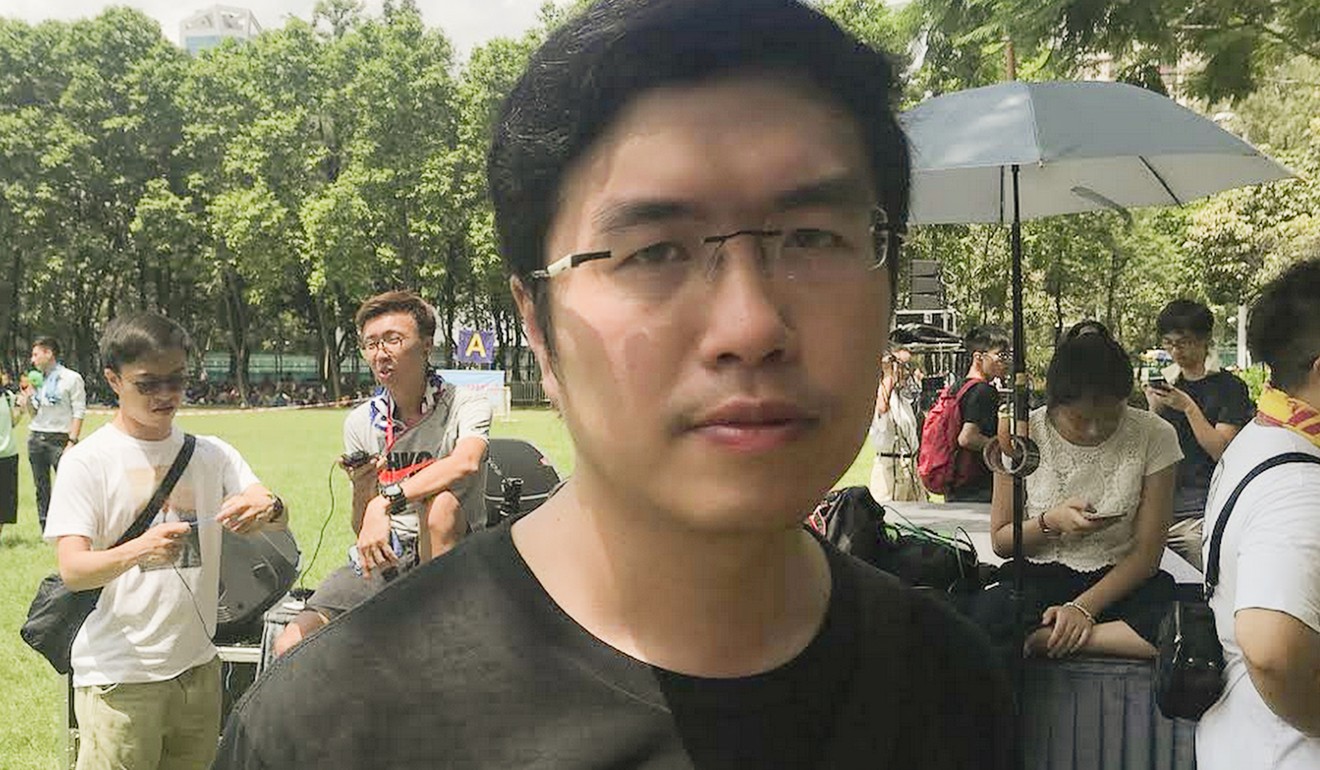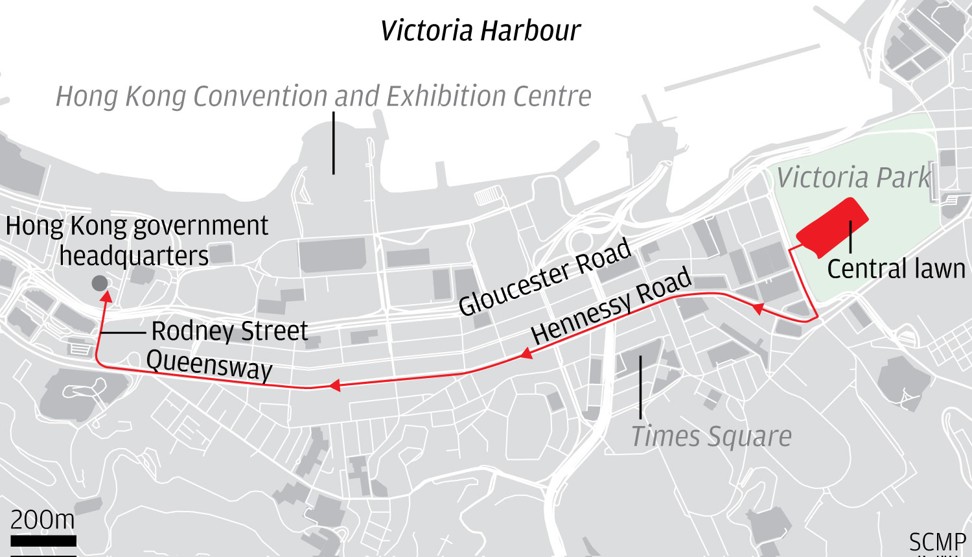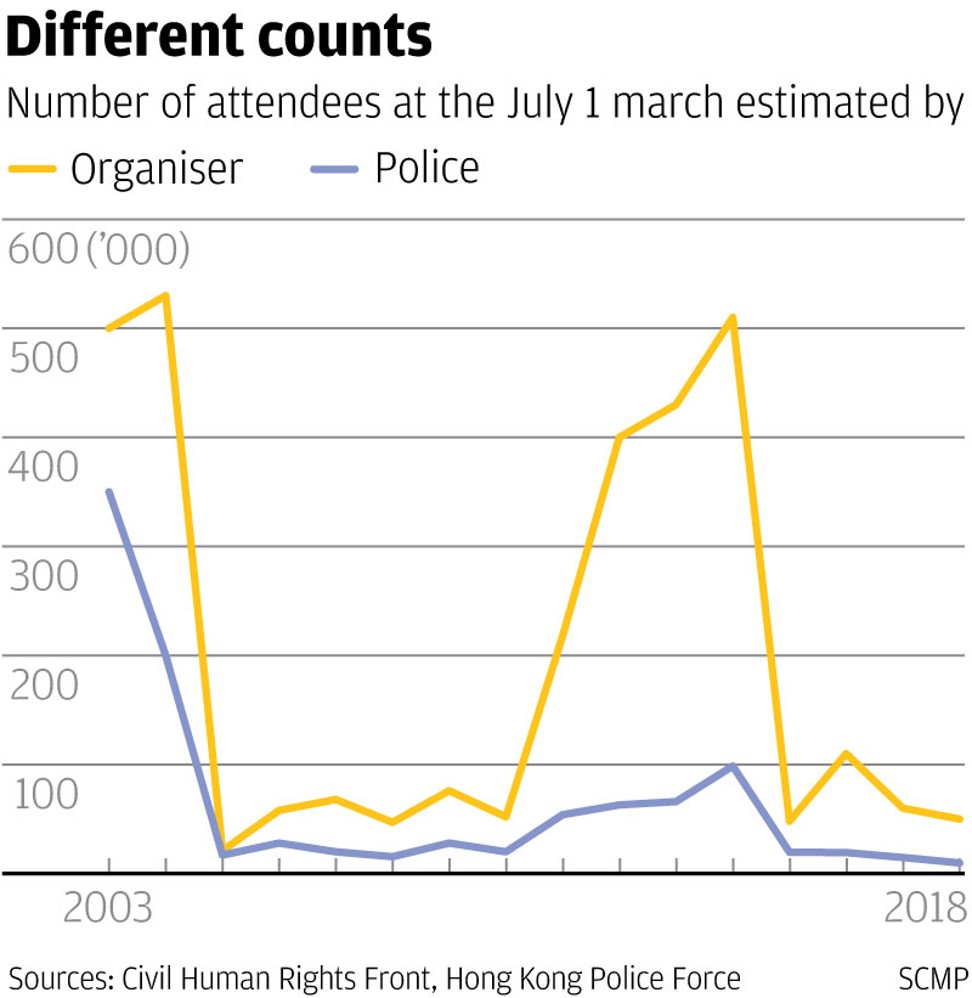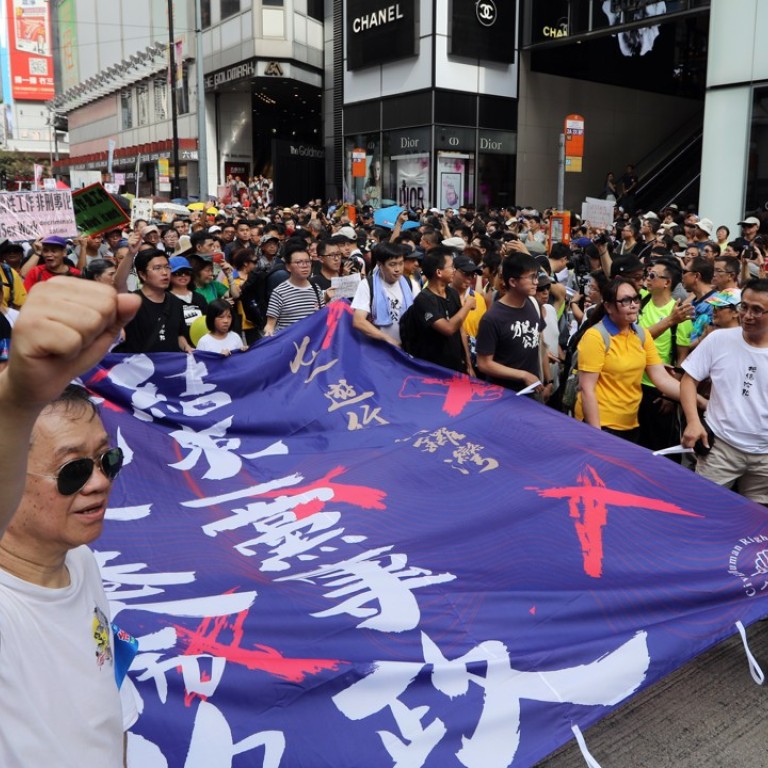
Hong Kong’s July 1 march turnout hits three-year low, estimated at 50,000
Attendees at annual demonstration, marking 21st anniversary of city’s return to Chinese rule, defy police warnings by cutting in away from the procession’s official start
Organised by the Civil Human Rights Front – an umbrella group of some 50 pro-democracy groups – the march is both a protest against Chinese power and a show of support for democracy. This year, the theme is “End one-party dictatorship, reject the fall of Hong Kong”.
Police warned that anyone ignoring force orders could be arrested for unlawful assembly.
The front said it expected the turnout to be more or less the same as last year’s 60,000. Police estimated the turnout was 14,000 last year, a 14-year low.
Rolling updates below from Kimmy Chung, Sum Lok-kei, Su Xinqi, Alvin Lum, Ng Kang-chung, Linda Lew, Simone McCarthy, Zoe Low, Martin Choi, Jane Zhang, Michelle Wong, Veta Chan, Zoe Law and Evanna Gurung
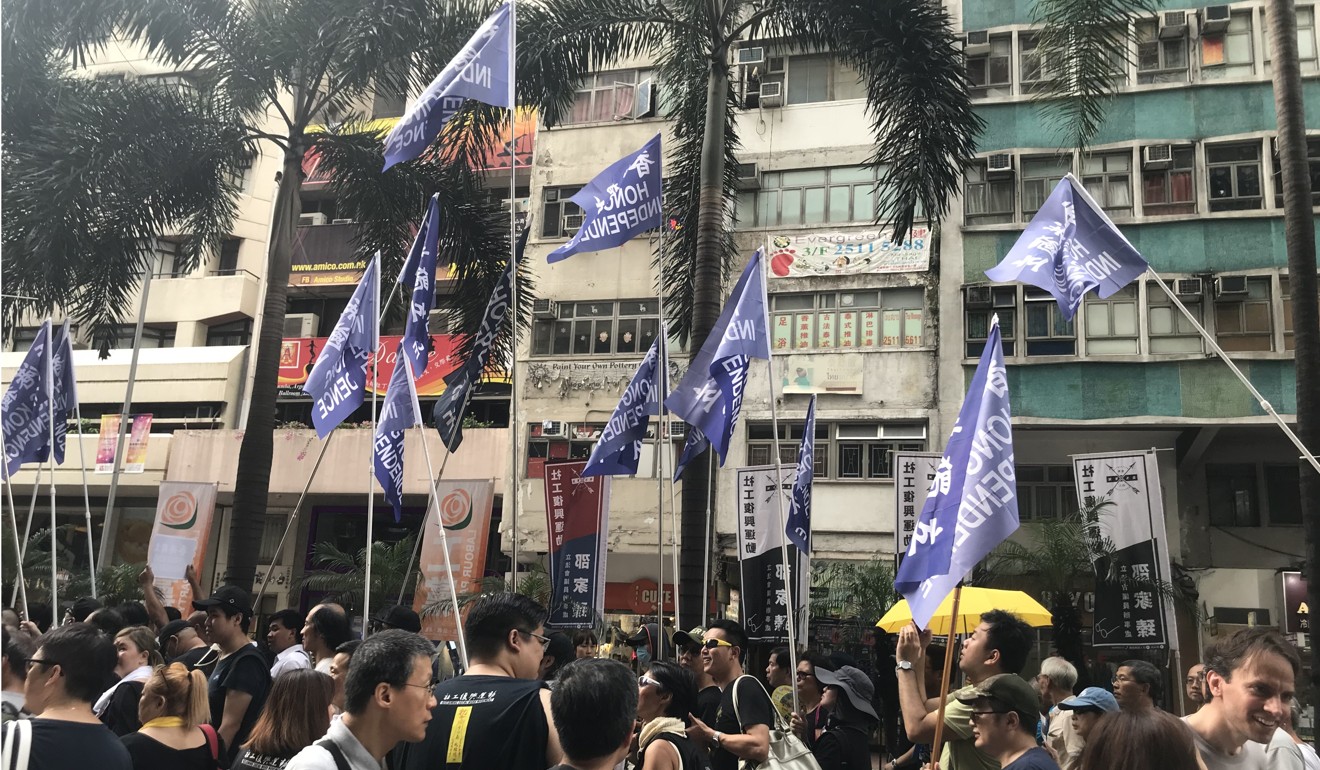
7pm – Rally ends
The rally at government HQ ended just before 7pm. Speaking afterwards, the front's convenor Sammy Ip said they had disproved the police's theory that marchers joining midway could risk illegal assembly. “We hope the police will not continue this absurdity,” he said.
The front observed no conflicts between police and marchers, he added.
Ip said the front was still satisfied despite the low turnout, adding that it was hard to estimate attendance because of the people who joined midway. He said thousands had started at the Victoria Park lawn, meaning that most marchers did not start at the designated point. He accused the police of trying to stop people from joining.
He said the low turnout did not mean people were satisfied with Carrie Lam, but conceded that the recent housing policy announcement could have lessened the public's willingness to march.
Liberal legal scholar Benny Tai Yiu-ting, one of the leaders of the pro-democracy Occupy movement, said that although Lam had put forth measures on livelihood and housing, a lack of democratic legitimacy would come back to haunt her.
“[Just like with] past chief executives, I don't think a government that lacks accountability will be able to tackle some of the core social conflicts in Hong Kong,” Tai said.
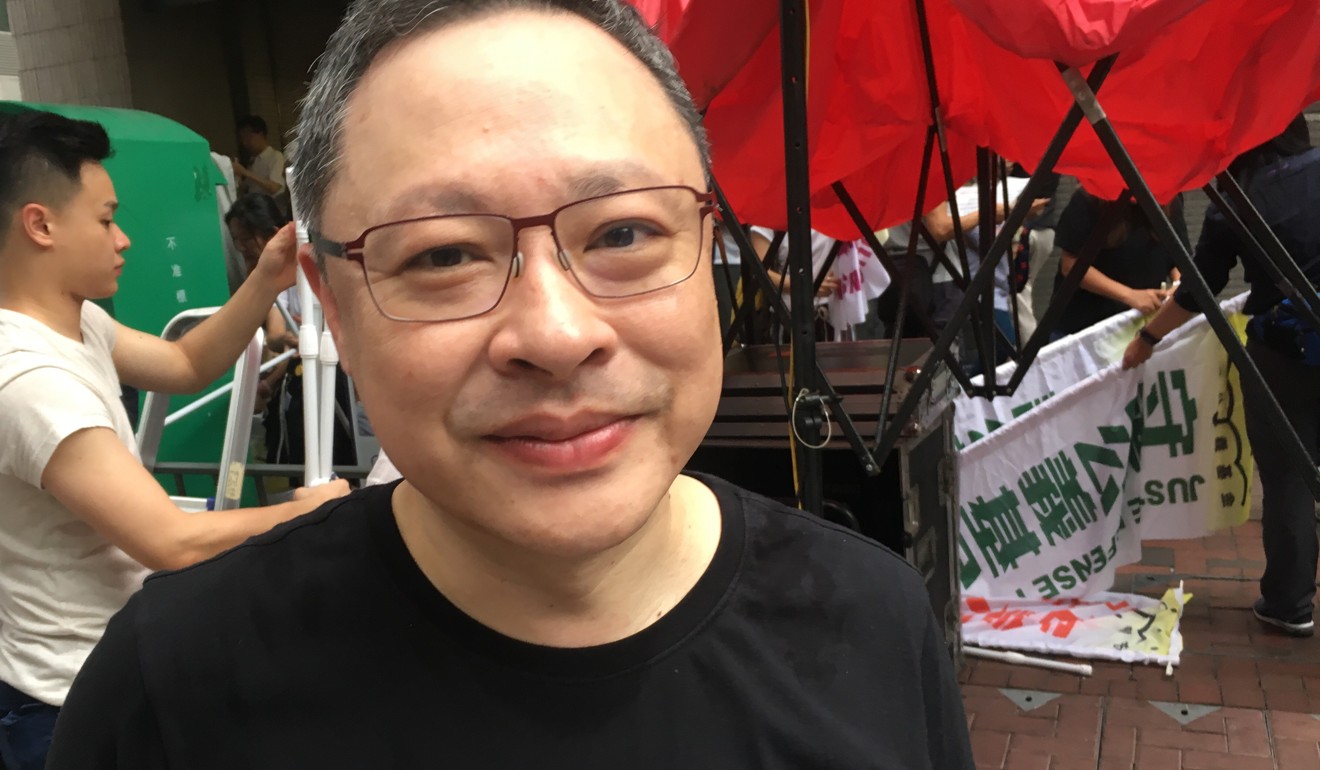
Professor Paul Yip Siu-fai, associate dean at the University of Hong Kong’s faculty of social sciences, who sent researchers to do headcounts along the route, estimated the turnout at 14,170, with about 45 per cent of the people joining midway. He had placed one team at Causeway Bay and another at Admiralty.
Last year, his team's estimate was about 16,000, with about a third joining in the middle of the march. Yip declined to comment on the low turnout, but said the theme of "Ending one party rule" did not seem to appeal to protesters, whose demands were diverse.

6.40pm – Crowd estimate hits three-year low
Organisers from the Civil Human Rights Front have estimated the turnout for the march at 50,000, the lowest estimate since 2015, when it stood at 48,000. Police estimated the turnout at 9,800.
Legislators have been addressing the crowds in the forecourt outside the government headquarters, the so-called Civic Square.
The Democratic Party’s Helena Wong Pik-wan led protesters in chanting the slogans: “Reboot political reform. We want genuine universal suffrage.”
She said Carrie Lam claimed she had issued a range of policies, but had not handed in any “homework” on the matter of democratic development.
The Civic Party’s Tanya Chan reminded the public of the controversial co-location arrangement of the high-speed railway. She said the co-location concern group would continue to press the government and safeguard justice.
6.30pm – Caged music outside government offices
Kacey Wong, a local visual artist, has been sitting inside a cage made of red iron bars and playing three songs – China's national anthem, Britain's national anthem and Do You Hear the People Sing? from the musical Les Miserables – on an accordion outside the government headquarters since the march started.
“Hong Kong was turned from a British colony to a Chinese colony ... And our freedom has been undermined by the government,” he said.
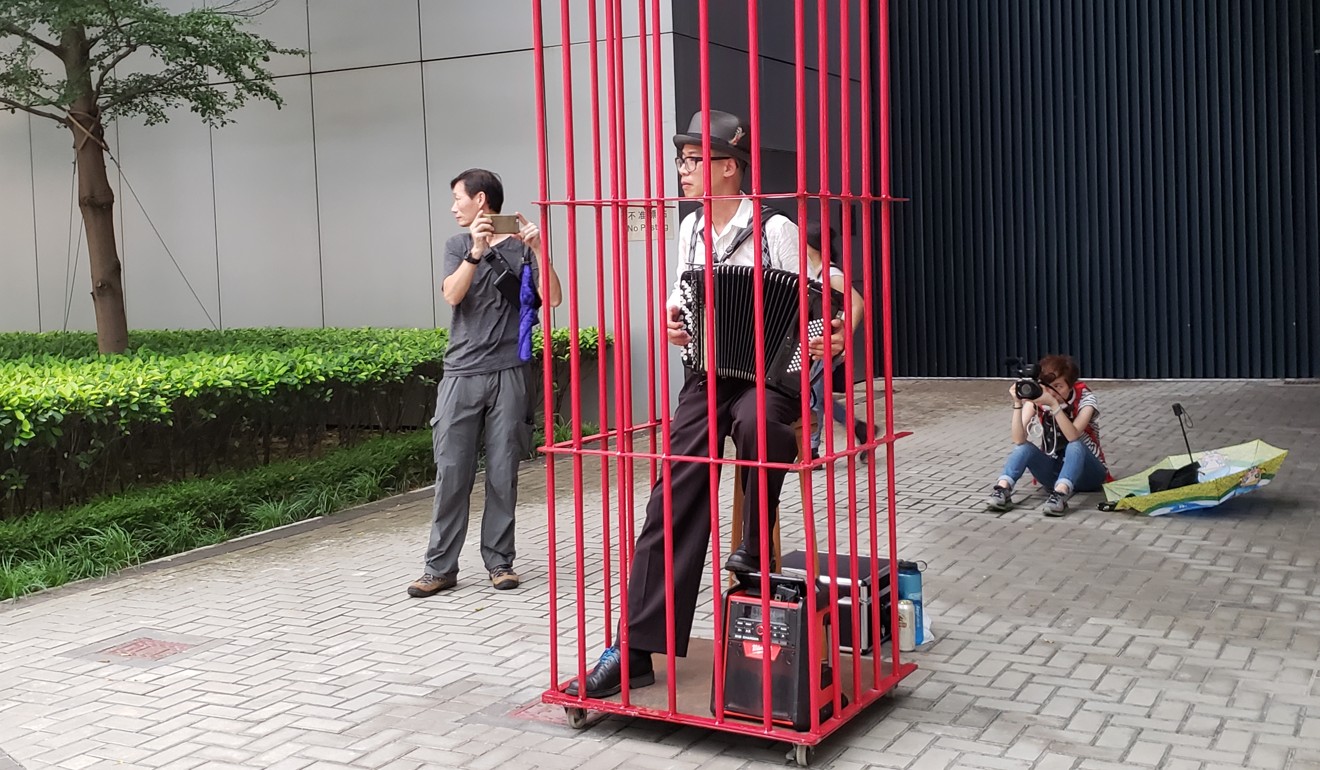
He said he would also like to criticise the government for, as he saw it, unfairly punishing social activists. It took Wong, who used to know nothing about playing music, six months to master the accordion and prepare the performance.
“I do worry that after China's national anthem law is introduced to Hong Kong, I won't be able to stage this any more. So I want to show it to the public as long as I am still allowed to,” he said.
6.15pm – The government responds, as the march approaches its HQ
Since 5pm, marchers have begun to amass at the Hong Kong government headquarters at Tamar, Admiralty, where there will be a rally.
In response to the march, a government spokesman said: “Chanting slogans which disrespect 'one country' and disregard the constitutional order, or which are sensational and misleading is not in line with Hong Kong’s overall interests and will undermine its development.”
He said officials had been implementing the “one country two systems” principle, “Hong Kong people administering Hong Kong” and a high degree of autonomy in strict accordance with the constitution and the Basic Law.
“Under the arrangement of 'one country, two systems', we have to firmly uphold the 'one country' principle, have a correct understanding of the constitutional order as set out by the constitution and the Basic Law, and safeguard the country's sovereignty, security and development interests,” he said.

Agnes Chow Ting, a member of Demosisto who was barred from taking part in a Legislative Council by-election earlier this year, said: “The government is always saying that the people are dissatisfied because of the livelihood problem, housing problem, economic problem, but I don’t think this is the whole picture.
“Lots of Hong Kong people also care about basic human rights and the young people are fighting for democracy in Hong Kong.”
She added that Carrie Lam had made an effort to introduce new housing policies. But she said land distribution and the “good relationship” between the government and property developers were the core issues.

5.50pm – Reaction to Friday’s housing policy announcement
But Mrs Lau, a 57-year-old cleaner on the march, was unimpressed.
“The government always wants people to buy a flat, so that they can keep us occupied and have no time to think about other things [happening in society], nor dare to make demands so we won’t lose our job,” she said.
Lau expressed her disappointment and frustration with current housing policies. “We don’t need to buy a flat,” she said. “We just need [public housing] in which to stay.”
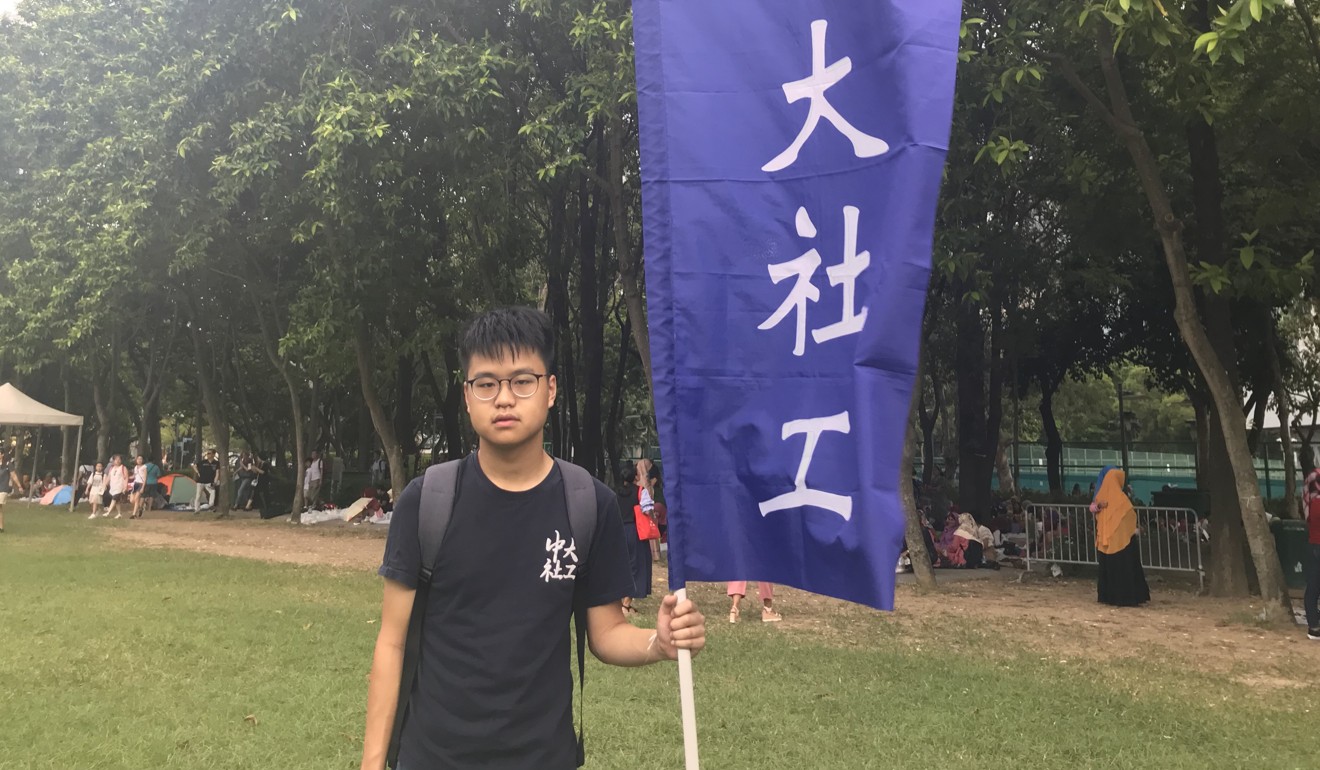
Sit Chun-hang, 18 and a social work student at Chinese University, said it should not have taken so long for the policies to arrive.
“The government has been procrastinating on housing policies,” he said. “It was disappointing to see these policies announced just very recently. It is more important to increase land supply.”
Sit, who was on the march with his classmates, was also driven by political grievances.
He said: “Since Hong Kong was returned to China 21 years ago, democracy, freedom, and social policies have been deteriorating. I wish to voice out our opinions and demands.
“We are worried about suppression of freedom of speech. Seeing Legislative Council members disqualified and policies forcefully passed, we are concerned if anyone can represent us and voice our opinions.”
5.30pm – Visitors from the north
Eric Young, a Shenzhen native in his 40s, had gone to Victoria Park earlier in the day to witness for himself a ritual he had heard about for a long time. He said it was something that made Hong Kong “special”.
Young mentioned the difference between Hong Kong and mainland China. He said: “Democrats are able to express themselves more freely here. You wouldn’t see this in China.”
We can't achieve democracy in China. We hope you Hongkongers can achieve that. There are definitely hopes ahead. That's why we are here, to get a sense of freedom
And Young was not the only person who had come from Guangdong, just across the border with Hong Kong, for the march. Among the crowd were three people in their 20s, also from the province. They said they joined the rally for the first time to learn about the “real Hong Kong” and support the cause of pursuing democracy.
"We want to know what Hongkongers really think," said Ms Tsang, a 23-year-old university graduate, who has been following Hong Kong news and its TV dramas on the mainland. "From the news there seem to be lot of radical thoughts. Like those Hongkongers are anti-mainland or pro-independence.”
“Some Hongkongers clearly want to pursue genuine democracy,” she said. “This is worth supporting.”
Her friend, Ms Wan, said: “We can't achieve democracy in China. We hope you Hongkongers can achieve that. There are definitely hopes ahead. That's why we are here, to get a sense of freedom.”
But one local resident was less excited by the mass display of dissatisfaction. A university student in his 20s, he said he did not see any purpose in joining the march.
“I don’t see where we are getting,” he said. “The rally won’t help anything; things have been the same for the past few years, even deteriorating.”
5pm – Lam masks, pro-independence banners, ethnic minority concerns
Protesters have arrived wearing Pinocchio-style caps in the image of Carrie Lam, with long noses attached. About 20 marchers are waving flags bearing the words “Hong Kong independence”, some wearing masks and sunglasses.
Among the many concerns being voiced on the march was the plight of the city’s ethnic minorities.

Jeff Andrews, a 32-year-old social worker, was marching with ethnic minority rights groups Unison and Voices of Diversity. He said he was happy with the turnout from the two groups, which he said had increased to about 50 people, including young people and parents.
Andrews, who was born in Hong Kong, said: “Many of us are born and raised here, we come from all walks of life – Nepalis, Pakistani, Indian – and really we feel [we aren’t] represented by this government; our voices are not heard. And even if they are hearing minority voices it’s usually elite, business interests. The grassroots are still being affected.”
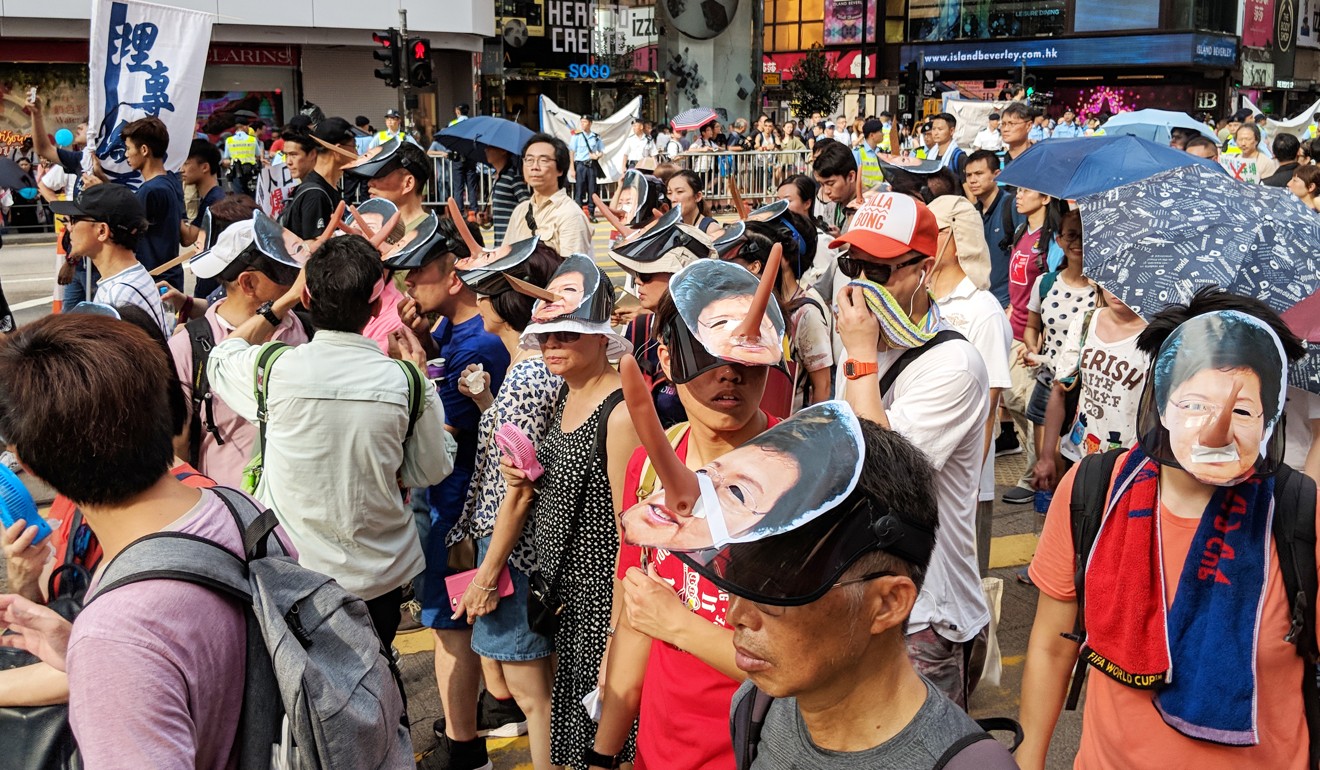
4.40pm – Anson Chan decries ‘erosion of our lifestyle and core values’
She said she was disappointed that Carrie Lam had not voiced a desire for universal suffrage and respect for the city’s autonomy.
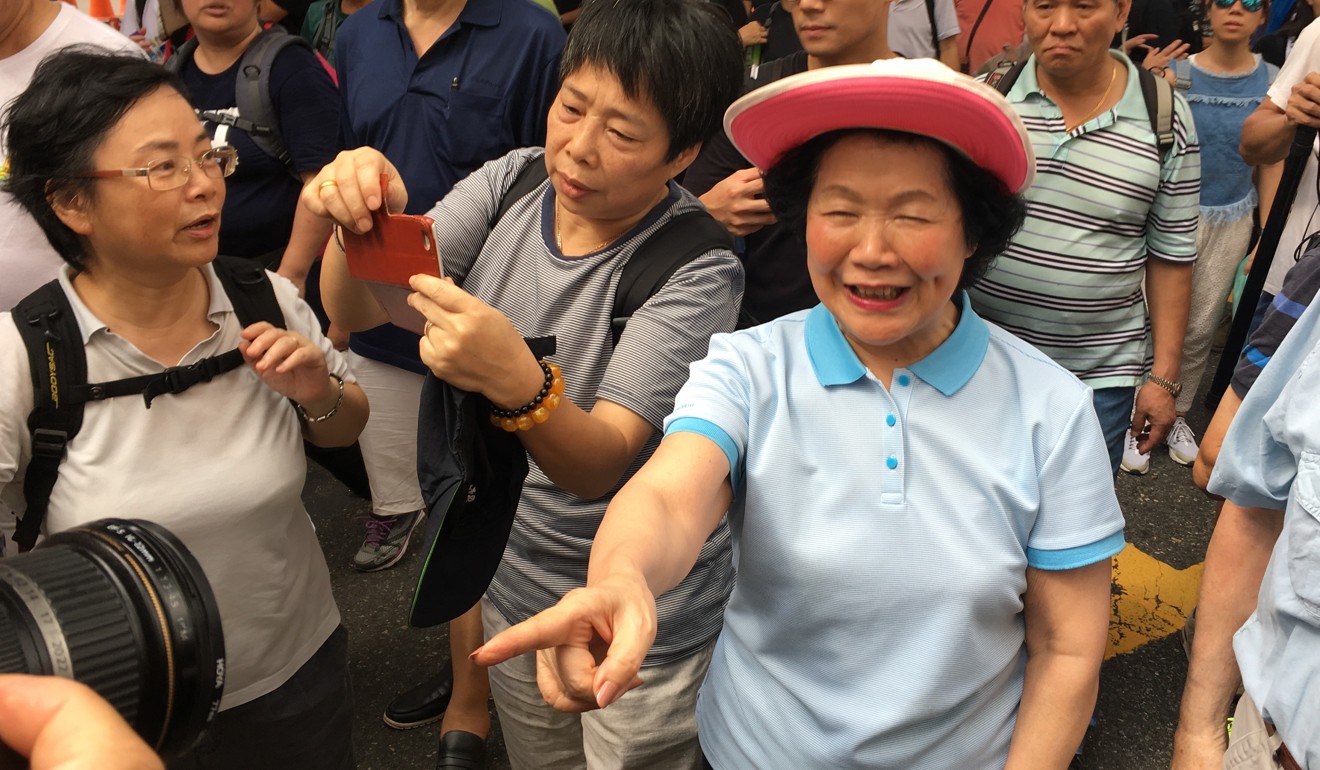
4.15pm – Protesters join march midway, despite warnings
Protesters have begun to join the march midway, despite police warnings not to. The front's convenor, Sammy Ip, joined on the westbound side of Hennessy Road, opposite Sogo department store.
"I welcome the police to arrest me at this moment, or after I go home. I have no fear," he said. He said Goldmark Plaza on Hennessy Road was the official starting point of the march, and called on the public to join midway.
Pedestrians cheered and joined the march via Hennessy Road and Jardine's Bazaar, as police officers kept the crossing outside Sogo closed.
A clerk in his 50s who said he had been attending the July 1 march for more than 10 years, and who gave his name as Mr Law, said he did not worry about cutting in. He was waiting for the march opposite Sogo, on the westbound side of Hennessy Road.
“The march will pass through anyway. The more they won’t let us join midway, the more we have to do it to show our frustration,” Law said.
He also said the police warning against joining the march midway could lower attendance.
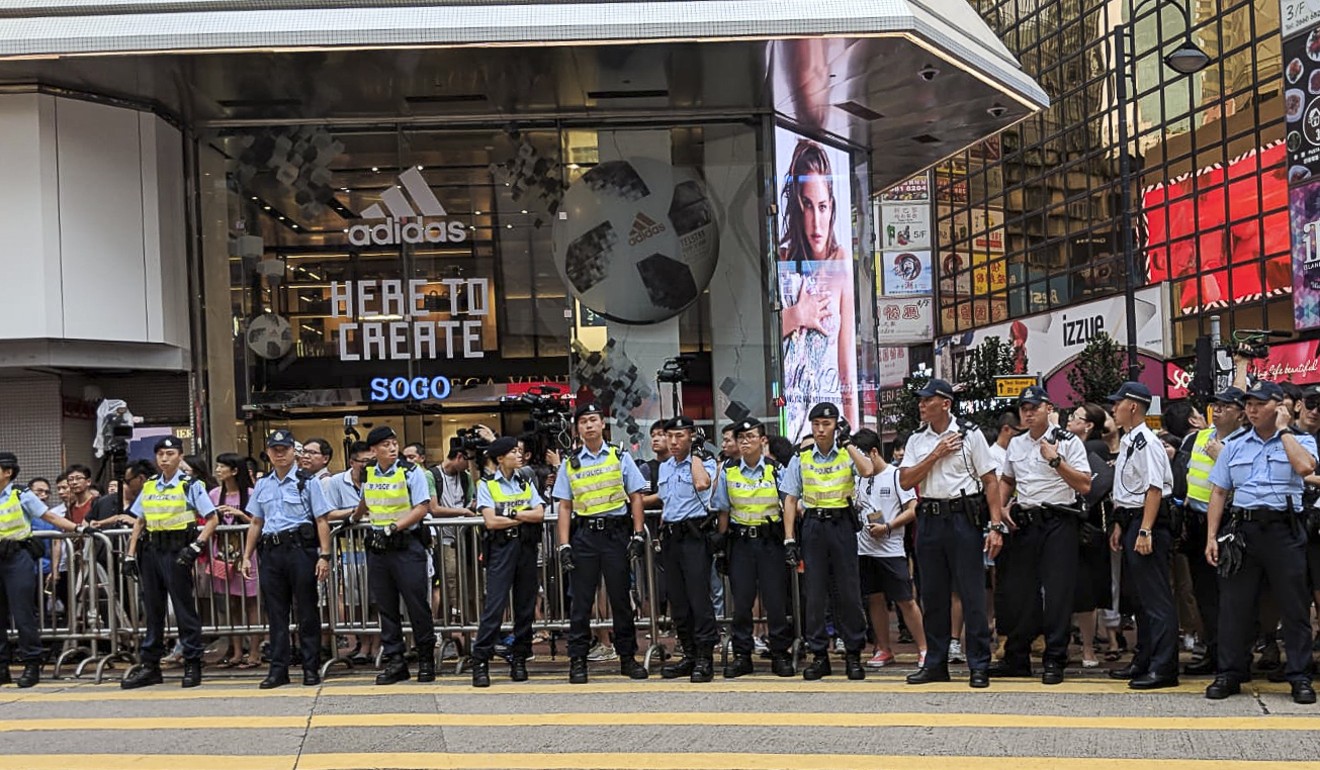
Police had begun to block the entrance to Hennessy Road from Jardine's Crescent, also opposite Sogo, at about 3.45pm, as the head of the march arrived there. An activist speaking through a loudspeaker on the truck leading the march appealed to the crowd waiting behind the metal rails at Jardine's Bazaar to join in. The crowd responded with at least two rounds of applause.
Several middle-aged Hongkongers standing between the clapping crowd and the police said loudly: “The police are abusing their power, therefore citizens cannot march.”
“We need to cross the road,” they shouted. “We want to shop at Sogo and contribute to Hong Kong's prosperity.”
3.30pm – ‘What is the point of having a Legislative Council?’
Shortly before the procession started, middle-aged marcher Winnie Chan said she joins almost every year.
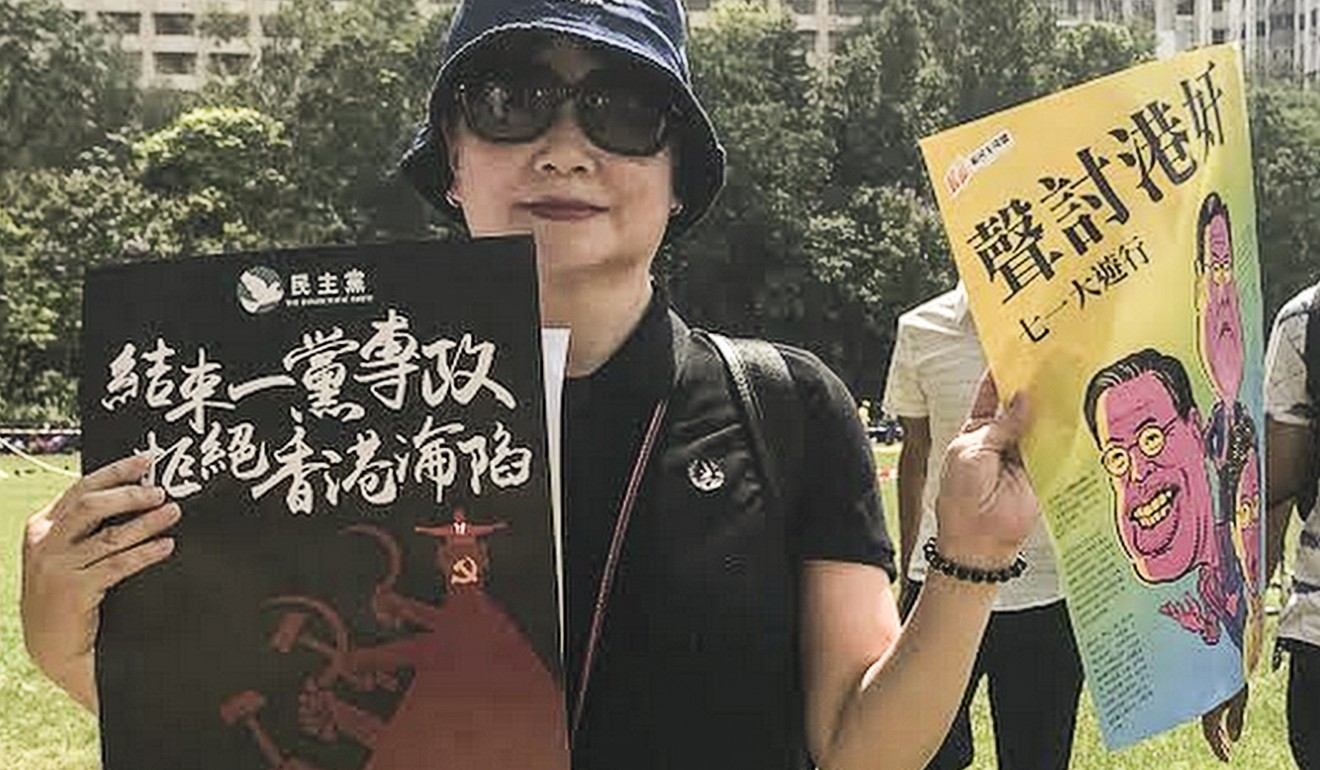
“We're here to fight for the younger generation,” said Liao Xiu-ying, a 74-year-old retiree holding a fan with the slogan “We want universal suffrage”. She said she had been at the march every year since 1997.
“Oppression is mounting from the Communist Party, but if we have the ability, we should continue to fight,” she said.
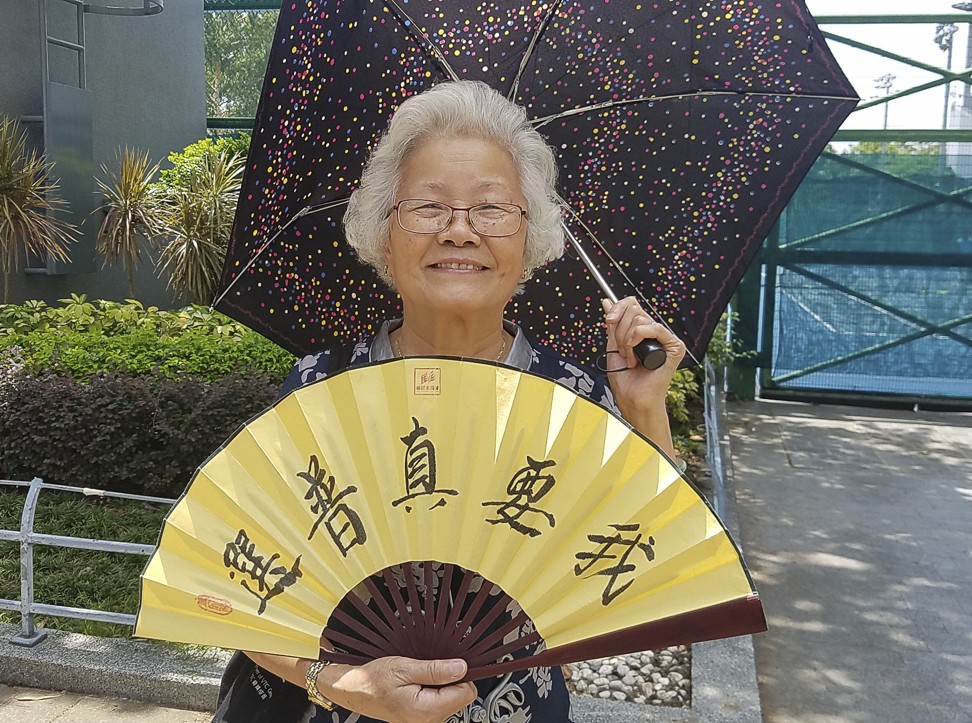
3.15pm – Protesters following orders, so far
Dozens of police officers were seen patrolling East Point Road and Great George Street, near where they specifically told protesters not to assemble. No protesters were seen gathering there, after the rally organiser told the public not to, for fear of clashes.
Multiple groups set up booths on Great George Street to seek donations from the public, including People Power, Demosisto, and the League of Social Democrats. Ousted lawmaker Lau Siu-lai – "actively considering" running in the Legislative Council by-election for the Kowloon West seat in November – was also seen seeking donations.
The march has officially begun, with about 400 people setting off from the park’s central lawn, the police-sanctioned starting point.

As they did, they brandished a yellow banner protesting the police arrangement.
“Protest against the ridiculous starting point arrangement. Citizens have the right to join in safety,” the banner read.
“No guilt in joining midway. Shameful police,” they chanted, referring to protesters who intended to join the march further along the route.
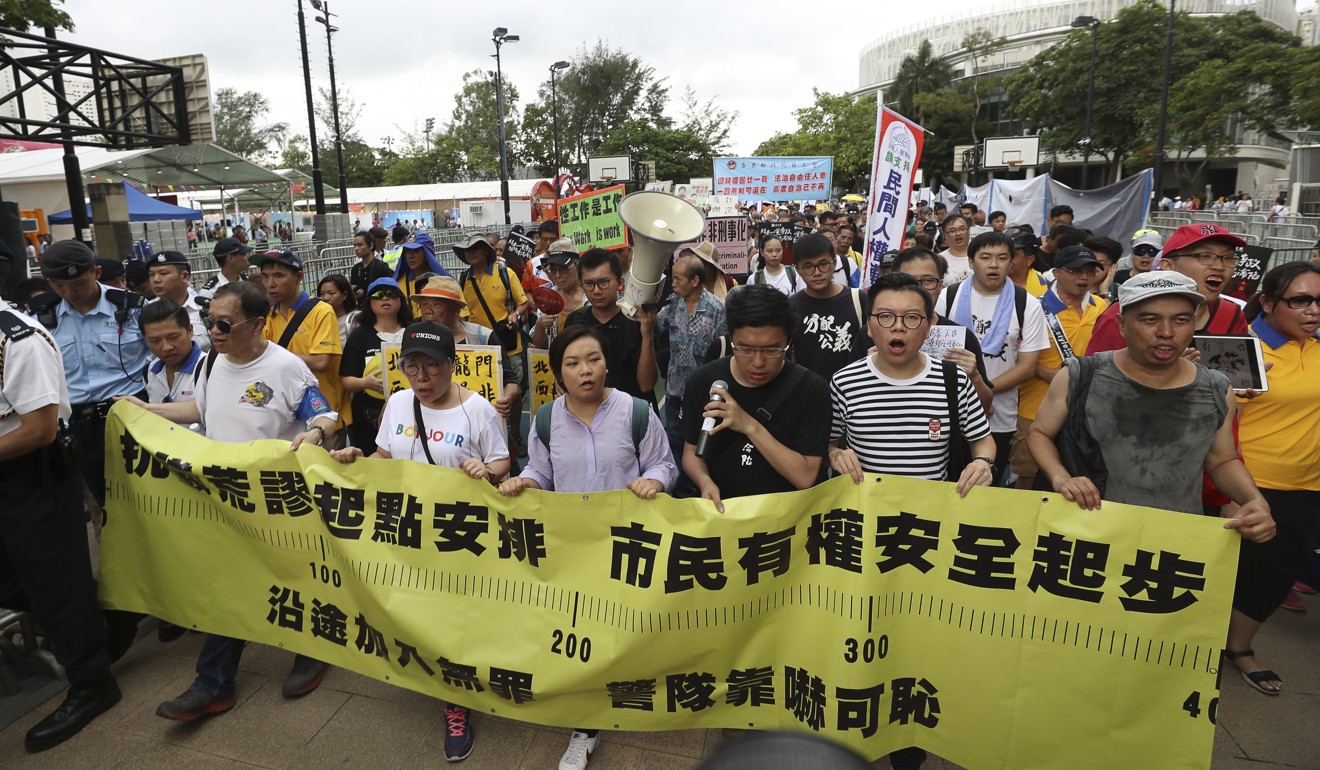
3.00pm – ‘Society has made our teenagers think it's not important; obey the Chinese government’
Taylor Lam, an 18-year-old who just completed the DSE exam, was at the march on his own. He was dismayed by what he saw as political apathy and an influx of mainland Chinese migrants.
“[My classmates] don't have much interest in politics,” he said. “I think society has made our teenagers think it's not important; obey the Chinese government. They only focus on studies, find a good job and income.
“First people don't care about it, then our rights will easily be taken by the Chinese government. We'll have no bargaining power on any policies. There are lots of new immigrants from China who apply for public housing. Even our locals don't have enough space to live.”
2.45pm – Carrie Lam’s ‘political line has not moved an inch’
Legislator Au Nok-hin, vice-convenor of the front, called on the public to join the march to call for an “end of one-party dictatorship” and uphold “one country, two systems”, the governing formula under which Beijing has ruled the city since 1997.
“[Chief Executive] Carrie Lam Cheng Yuet-ngor claimed the social atmosphere has turned better,” he said. “But there are still many social conflicts that remain unsolved. Lam’s political line has not moved an inch.”
By way of example, he cited the – rushed, as he saw it – passage of the controversial co-location bill that allowed mainland law to be enforced in the city for the first time.
